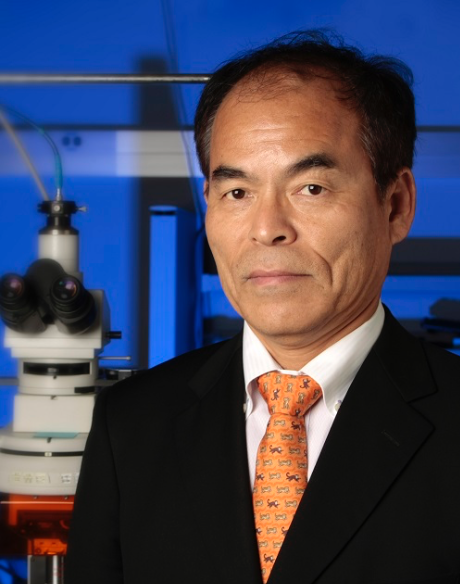Shuji Nakamura reveals how LEDs are benefitting the developing world

Author: Shuji Nakamura
Date: January 23, 2018

We are living in a world where, despite uncertainty in news and events, there is one trend that can be voiced with increasing certainty – the accelerating pace of the clean energy transformation and how this is reshaping the way in which the world generates electricity.
Although we have known about electricity since ancient times, humans have only been harnessing its power for about 250 years. Its evolution has seen the use of sources including coal, hydroelectricity, natural gas, nuclear power and has lent itself to the innovation of electricity entrepreneurs, who have been able to develop different lighting technologies.
Blue and white gallium nitride-based light-emitting diodes (LEDs) are the backbone of new energy-efficient lighting systems. The efficiency of an LED white light bulb is 20 times that of a traditional incandescent bulb. The US government’s department of energy estimates in that country alone, the transition to LED lighting will save 261 terawatt hours (TWh) of electricity by 2030, which will eliminate the need for more than 30 power plants of 1,000 megawatts (MW) each. That in turn will prevent the generation of about 185 million tonnes of carbon dioxide.
These breakthrough efficiencies also enable low-cost systems that couple LEDs and solar cells and provide illumination to millions of people in developing countries, who currently rely on toxic and dangerous kerosene-based light. This year’s Zayed Future Energy Prize recognises the global impact of this technology on both the climate and the citizens of our planet. However, the impact of this technology is only now beginning to be realised.
The United Nations estimates that the world’s population is expected to reach 10 billion people by 2050. Coupled with rising global temperatures, this growth will put enormous pressure on water and food supplies. The Food and Agriculture Organisation (FAO) of the UN calculates that food production will need to increase by 50 to 60 per cent globally to match demand. Simultaneously, climate change models indicate that without adaptive systems, temperature increases will pose large risks to food security and result in increased food prices.
Solid-state lighting using light-emitting diodes is helping to address the necessity for adaptation by enabling smarter greenhouses and indoor vertical farms that are efficient both in terms of energy consumption and water usage. LEDs are also enabling a 24-hour growth cycle that is decoupled from local weather conditions. Farmers are working to create light combinations to accelerate growth and in some cases, even enhance nutritional value. These technologies have helped the Netherlands become the globe’s number two exporter of food as measured by value, second only to the US, which is 270 times bigger. For example, Dutch tomato greenhouses produce more than six times the yield and consume 25 times less water than the global average.
At the University of California, Santa Barbara, we are now exploring the use of high-power lasers in driving lighting systems. The small size and high-power output of lasers make them ideal sources for compact applications requiring high illuminance, such as vertical farms, a method of farming where crops are grown indoors using vertical space to intensify production. Lasers can also enable novel form factor luminaires such as fibre-guided lighting. We envision running fibres under and around plants to provide more uniform illumination and further increase crop yields.
Water is another point of concern for a growing global population. Already nearly 850 million people lack a basic drinking water service and contaminated water results in more than half a million deaths annually. Climate change, increasing water scarcity, population growth, demographic changes and urbanisation already pose challenges for water supply systems. The World Health Organisation reports that by 2025, half of the world’s population will be living in water-stressed areas.
To help address this problem, LED emission is being pushed into the deep ultraviolet. We are developing devices that emit ultraviolet-C radiation at 280 nanometres (nm), capable of killing bacterial pathogens. Although energy efficiency and power output are still low, we believe that ultimately we can create devices nearly as efficient as their white counterparts, with the power to enable compact water purification units that can be deployed in the developing world, just like solar-powered task lighting.
These ideas and innovations are just the beginning and we know that many approaches will be required to address the challenges we will face. But just as the blue LED enabled a lighting revolution that has already impacted how we consume energy, continuous innovation in lighting functionality will impact our ability to sustain and thrive.
Shuji Nakamura is the Japanese-born inventor of efficient blue light-emitting diodes. A professor at the University of California, Santa Barbara, he was this year’s Lifetime Achievement Award winner at the Zayed Future Energy Prize and one of three recipients of the Nobel Prize for Physics in 2014